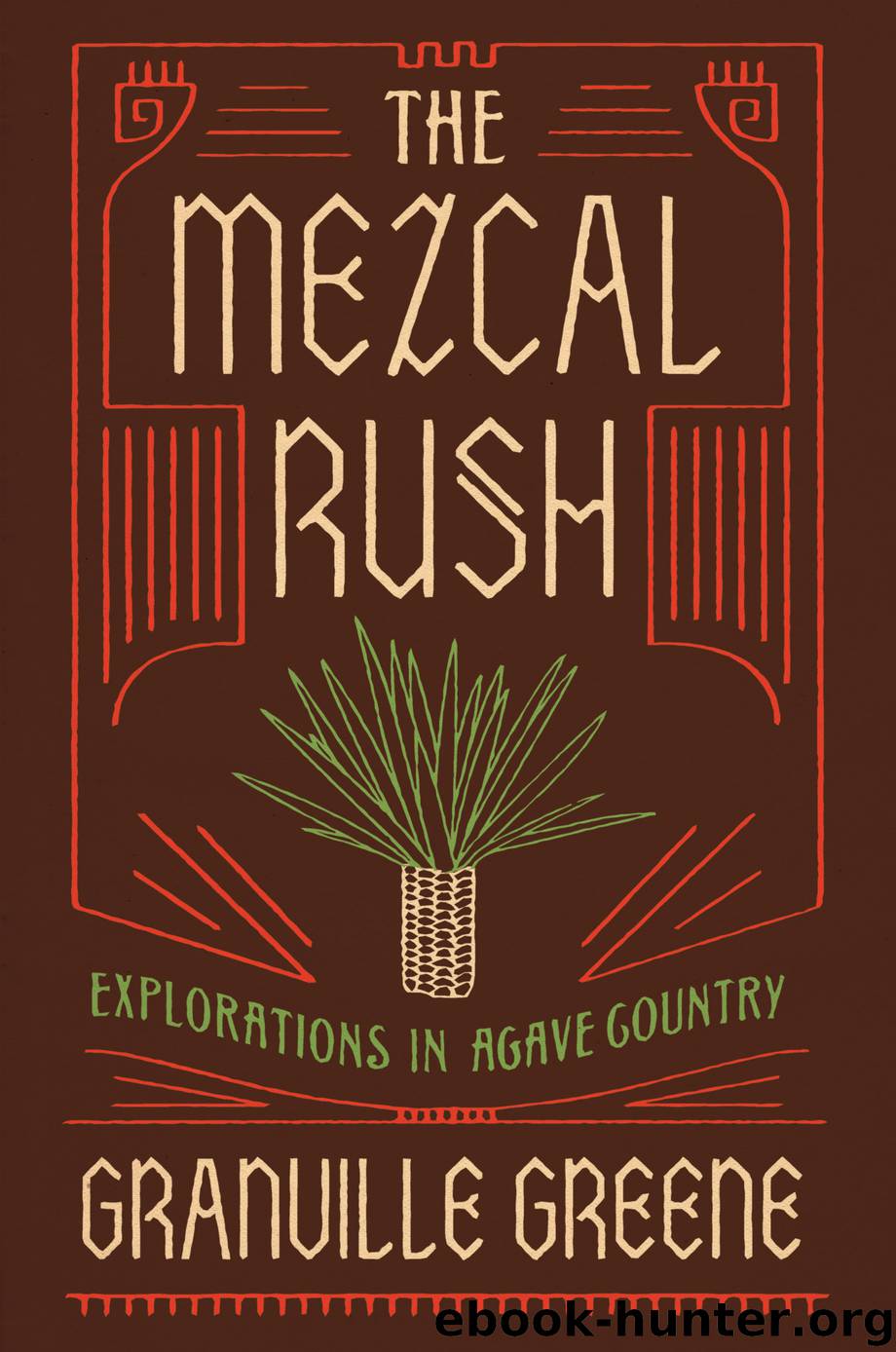The Mezcal Rush by Granville Greene

Author:Granville Greene
Language: eng
Format: epub
Tags: General Fiction
Publisher: Counterpoint
Published: 2017-03-07T05:00:00+00:00
ONE EVENING SOON after, I stopped by Mezcaloteca, a tasting room I had heard about in Oaxaca de Juárez. It was on Calle Reforma, a cobblestoned thoroughfare in the Centro Histórico. Across the street, a high wall surrounded the Santo Domingo Cultural Center’s expansive Jardín Etnobotánico (ethnobotanical garden). More than a thousand endemic plants were growing there, among them a selection of magueys.
Mezcaloteca was one of few spots in the world where a significant selection of Mexico’s diverse agave flavors—and their innumerable combinations—could be sampled in one spot. Behind the polished wooden bar, shelves were neatly arranged with dozens of handsomely labeled wine bottles filled with small-batch maguey distillates, many of them uncertified, that had been sourced from all over Mexico. For decoration, there was a miniature copper alembique, a large grabado (woodblock print) of Oaxacan-born President Porfirio Díaz, and dried quiote blossoms propped about. Though the place looked as if it had been there forever, it had opened the year before.
The young proprietors, Marco Ochoa and Silvia Philion, had previously worked in marketing and advertising in Mexico City. Marco was descended from five generations of mezcal distillers in San Antonio Mangoli, a tiny farming community three hours south of Oaxaca de Juárez. He and Silvia were eager to give traditionally crafted Mexican spirits the respect they thought was long overdue. Their approach was radically different from that of a typical Oaxacan mezcal bodega, where gyrating girls in skimpy outfits were often stationed out front, pushing colorful crema shots on tourists. Instead, the tasting room’s atmosphere was subdued, even reverential, as aficionados quietly sipped from their jícaras, sampling Mexico via their taste buds and comparing mezcal flavors in earnest whispers.
Fittingly, the establishment’s name was a fusion of mezcal and biblioteca (library). Each bottle was labeled with extensive details that included the name of the producer, the village and region where the spirit had been distilled, the ABV, and the maguey species used—as well as the size of the batch, the type of alembique, the kind of horno, the mashing method, the style of tina, and so forth. Such transparency is unusual: few mezcal brands even identify the maestros mezcaleros who make their spirits on their bottle labels. But Marco and Silvia wanted that to change. They were also enthusiastic educators. While charging patrons for copas and botellas of their offerings was their business (and they now have a brand, Mezcalosfera, available in the U.S.), they freely shared their extensive knowledge—drawing on an assortment of maps, charts, and books to introduce the vast mezcal world to anyone interested.
Although mezcal bars have opened in many cities abroad, none outside Mexico can offer anything close to the arcane selection on hand at Mezcaloteca, because they are able to sell only the comparatively few certified mezcals that can be legally exported from the country. The tasting room gave an idea of how things might be different for consumers abroad, if maestros mezcaleros throughout all of the mezcal-producing regions in Mexico were able to bottle, market, and export their small-batch spirits.
Download
This site does not store any files on its server. We only index and link to content provided by other sites. Please contact the content providers to delete copyright contents if any and email us, we'll remove relevant links or contents immediately.
For the Love of Europe by Rick Steves(3335)
The Sprouting Book by Ann Wigmore(3056)
BraveTart by Stella Parks(2975)
Better Homes and Gardens New Cookbook by Better Homes & Gardens(2956)
The Death of the Heart by Elizabeth Bowen(2908)
Salt, Fat, Acid, Heat: Mastering the Elements of Good Cooking by Nosrat Samin(2659)
Sauces by James Peterson(2593)
Classic by Mary Berry(2504)
Solo Food by Janneke Vreugdenhil(2494)
The Bread Bible by Rose Levy Beranbaum(2477)
Ottolenghi - The Cookbook by Yotam Ottolenghi(2360)
Martha Stewart's Baking Handbook by Martha Stewart(2335)
Kitchen confidential by Anthony Bourdain(2310)
Betty Crocker's Good and Easy Cook Book by Betty Crocker(2283)
Day by Elie Wiesel(2245)
Hot Sauce Nation by Denver Nicks(2108)
The Plant Paradox by Dr. Steven R. Gundry M.D(2045)
My Pantry by Alice Waters(2044)
The Kitchen Counter Cooking School by Kathleen Flinn(2015)
